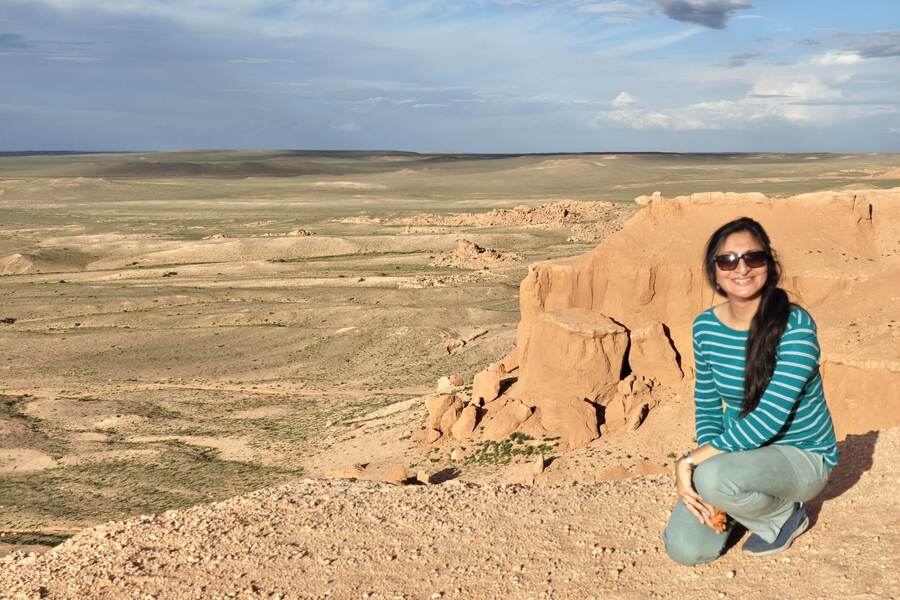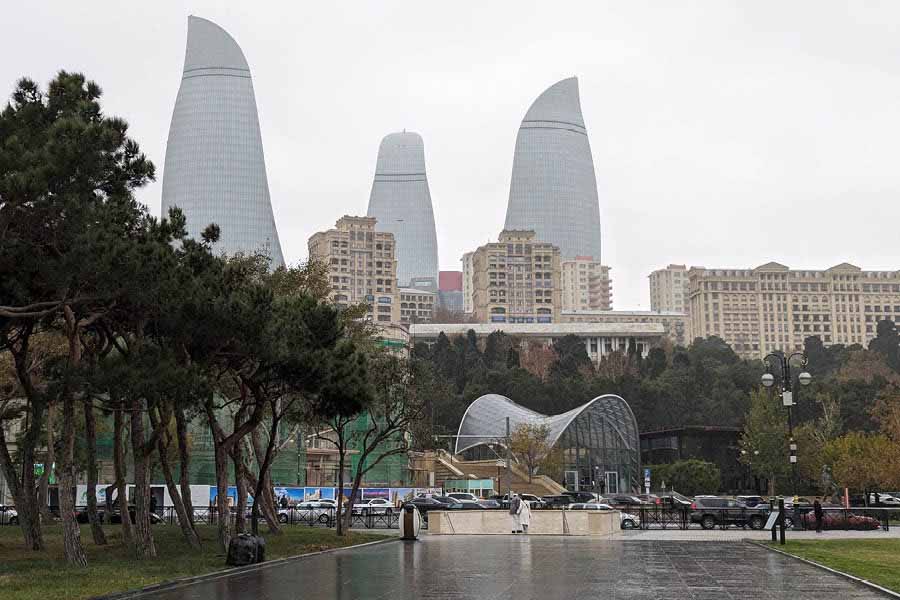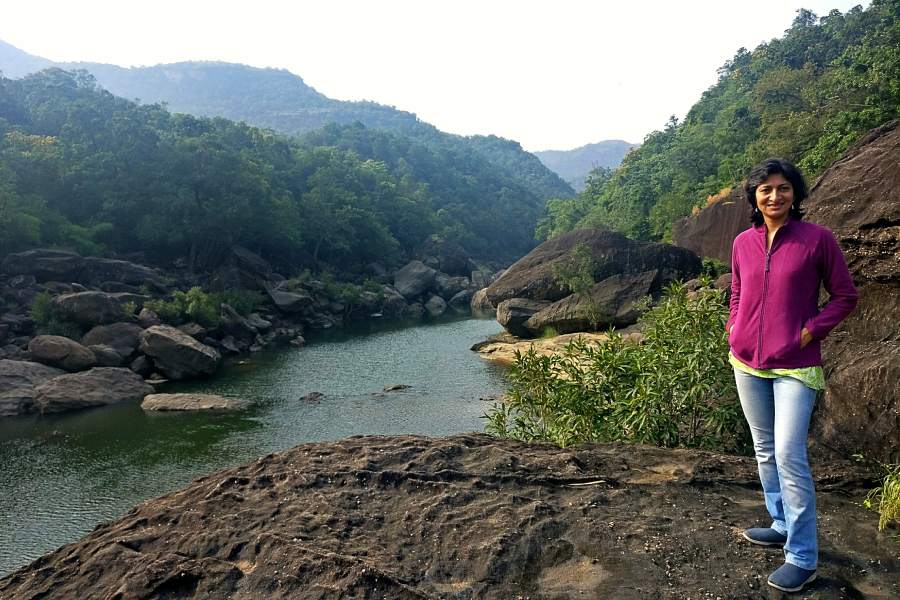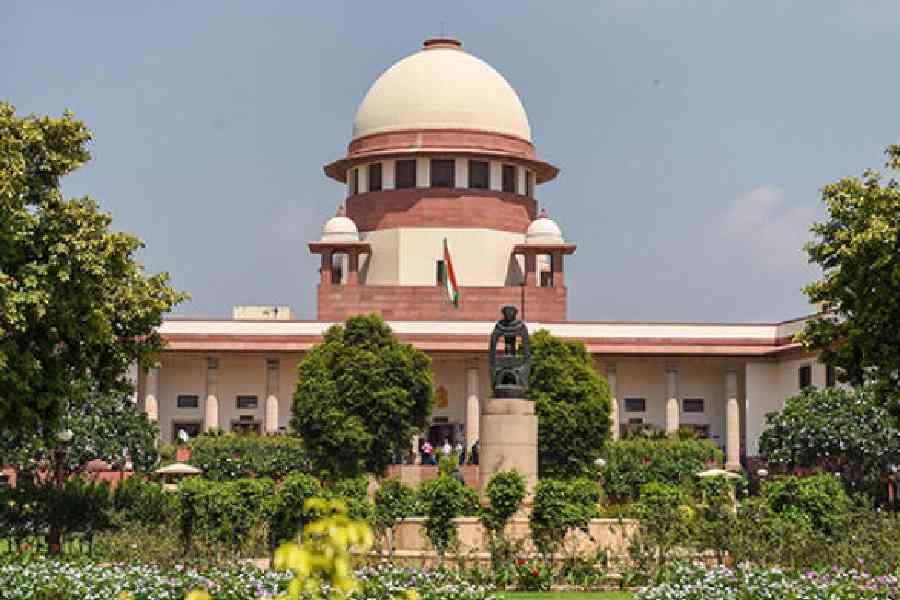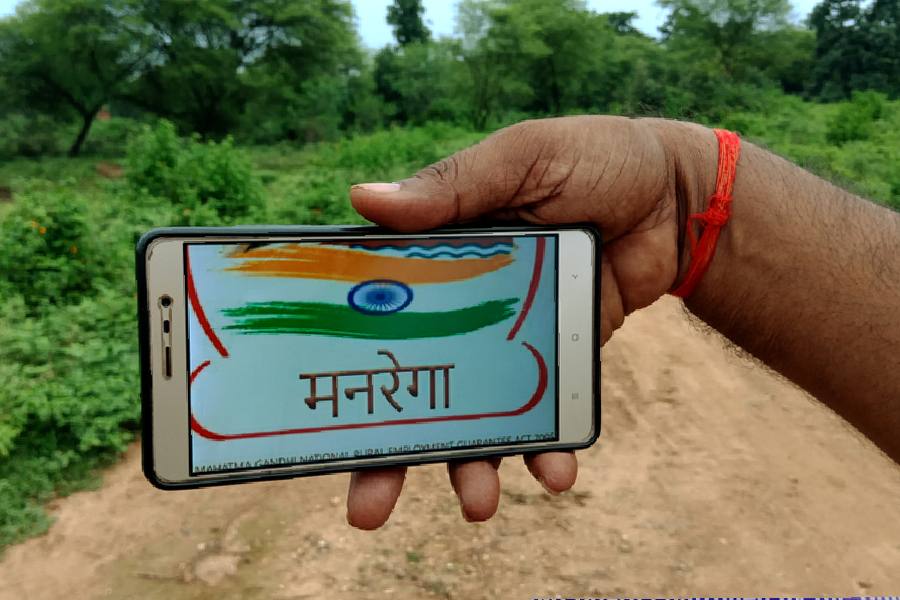In spite of being the 18th largest country on the planet and the former heartland of an empire that stretched all the way to Europe under the rule of Genghis Khan, Mongolia is hardly on travellers’ bucket lists, even intrepid ones. Sparsely populated and largely distanced from the headlines, this landlocked country that lies sandwiched between China and Russia, with the Gobi Desert blanketing much of its southeastern part, continues to be an enigma in today’s hyper-connected world.
Though Mongolia was not at the top of my bucket list either, I had been nurturing a quiet curiosity about its nomadic culture and its rugged and untouched landscapes. As luck would have it, I also happened to read about Women on Wanderlust (WOW) conducting their maiden trip there. And so, after several emails and calls with them to understand the itinerary, the possible challenges, the connectivity et al, I was ready to sign up for this novel experience.
One of the team members had gone to relieve himself when he sighted a pile of the dino eggs!
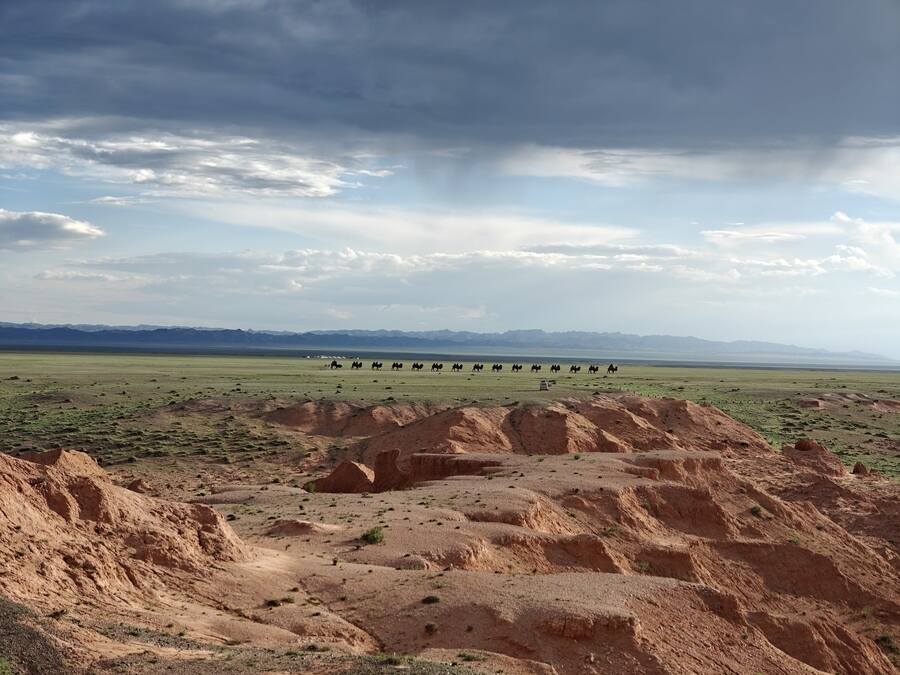
Bactrian camel models, perhaps a reminder of the erstwhile resting point of camels
We started our tour of Mongolia in Ulaanbaatar, the capital city, which turned out to be far more westernised than we had expected it to be. English was fairly well understood, cars were modern, and the city was perpetually busy. After spending a couple of nights there, looking up its various tourist attractions, sights and sounds, and picking up the mandatory Mongolian cashmere, our group took a domestic flight to reach Dalanzadgad, better known as DZ, all the way in South Gobi.
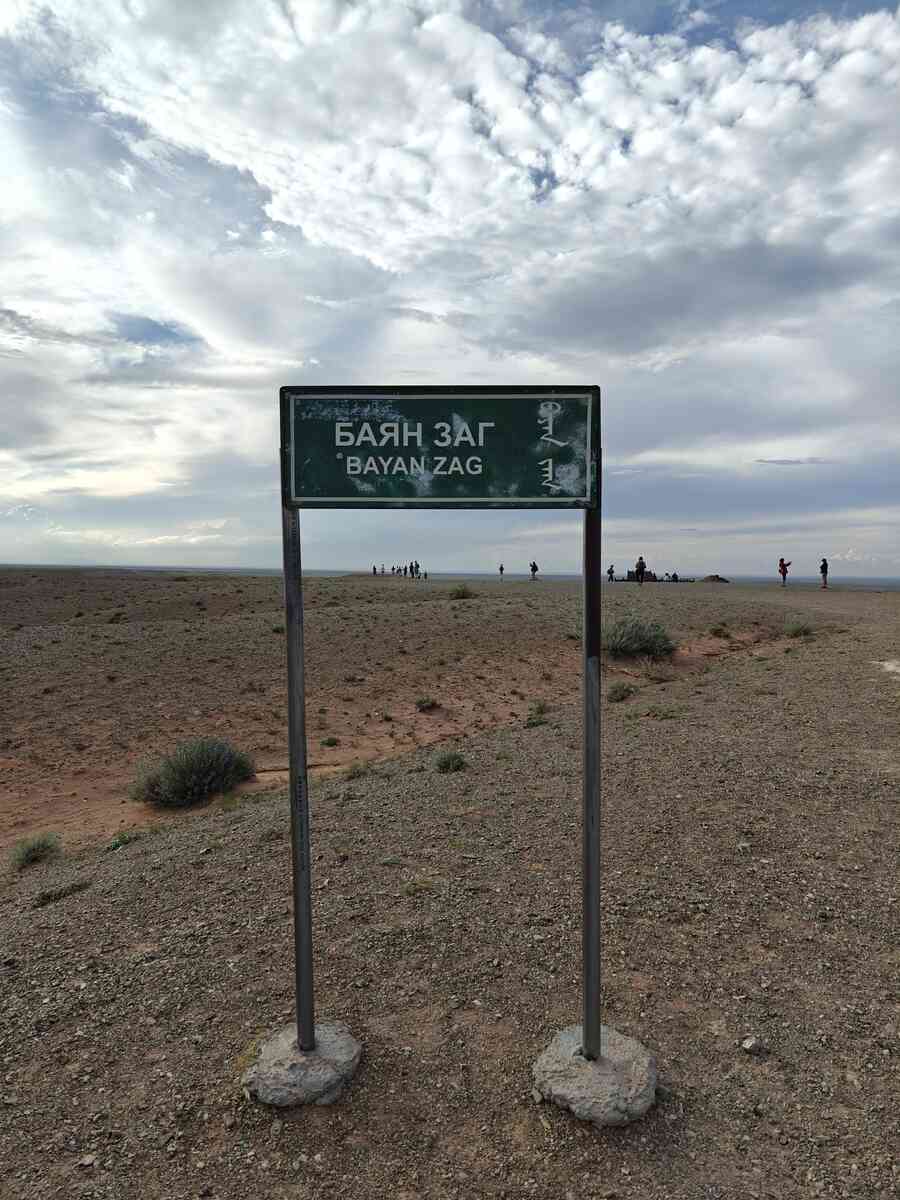
Bayan Zag has a serendipitous history, going all the way back to 1922
South Gobi greeted us with unending and unimaginably vast stretches of earth, dotted by nothing other than the odd herd of grazing sheep, goats and horses (fun fact — the country has approximately the same number of horses as humans!) as our cavalcade of four muscular 4x4s ripped through the desert. We were headed to a must-visit spot in Mongolia that is locally called Bayan Zag, but goes by the acquired nickname of the ‘Flaming Cliffs’. The site has a serendipitous history. It all began in 1922, when a group of explorers from the American Museum of Natural History arrived there in search of the origin of man. But lo and behold, there was a slice of precious palaeontology that was awaiting them. Instead of furthering their own quest, these explorers chanced upon the first ever dinosaur eggs the world had ever seen. The story goes that it was when one of the team members had gone to relieve himself that he sighted a pile of the dino eggs!
But why the distinctive name? That moniker is attributed to Roy Chapman Andrews, the leader of the expedition. Roy felt that the sandstone emitted a fiery, flame like colour, particularly during sunrise and sunset, and coined the name ‘Flaming Cliffs’, which stuck. It is easy to comprehend the logic and accept the name once you’ve experienced the site in person. After cutting through dry, barren lands, this sudden burst of cliff and sandstone really does emit a golden gleam. Though we visited it on a day that had a cloud cover, it wasn’t hard to imagine the shine those slopes would bear on a clear, sunny day. Besides a few other tourists scattered across the expanse of the terrain, there is nothing else that meets the eye from atop the cliffs, other than a row of Bactrian camel models, put up at a distance, perhaps to remind the current day visitor of how this location also used to be a resting point for the camels, much before it became famous for its dinosaur eggs. We learnt that the location is also a birdwatchers’ paradise, as there are many species of breeding, summering, migrating, wintering and resident birds of significance for ornithologists who come from all over the world.

Yurts or ‘gers’ — circular, portable, dwelling units set up in the desert — are widely used Mongolia
Spending a couple of hours at the Flaming Cliffs, we get into our vehicles again to take us to our abode for the night – yurts or gers that are circular, portable, dwelling units set up in the desert. Made of sheep felt that keeps them warm, these gers are made to withstand harsh terrain and weather and are pitched as necessary by the nomadic Mongolians who ‘set up home’ as they move from place to place.
The next morning, we checked out of our yurts and packed ourselves into the SUVs again. This time our group was headed towards the Khongor sand dunes, about 200km away. The terrain remained dry but got rockier. More surprisingly, the skies were even more overcast. Those gorgeous cerulean blue Mongolia skies that I had Googled before coming were yet to make an appearance. Instead, a different adventure awaited us.
A big river? In the middle of the Gobi Desert?
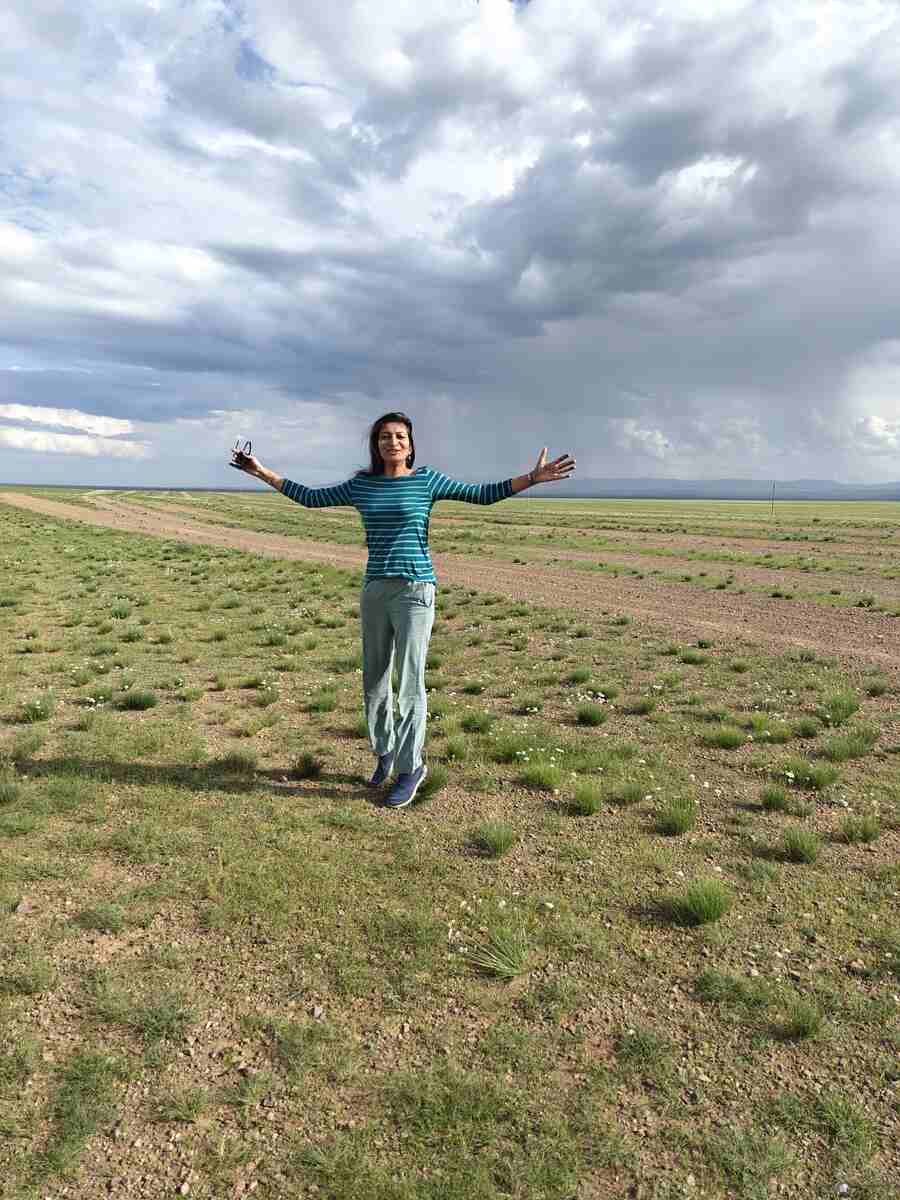
The author in the middle of the Gobi desert
An hour or so into the drive, our convoy of vehicles came to an abrupt stop. We wondered why. A tyre puncture? Some mechanical failure? There was no communication with the other jeeps as there was zero mobile network. There was no communication possible with our driver either as he didn’t speak a word of English and we certainly hadn’t picked up any Mongolian. We sat in silence, merely obeying orders coming from the first navigating jeep, which also had our group leader and guide, Ching.
The first 15 to 20 minutes passed by chatting, rolling down the windows and taking pictures. All along the drive, the windows needed to be up to avoid the dust and the wind. Some of us let our imagination run wild. Was there a wild animal on the prowl? A herd of wild horses or camels ahead? What could possibly be the reason for halting in the middle of the Gobi Desert?
And then, suddenly, after a brief communication and orders from the front of the cavalcade, all the cars started reversing. We were still in the dark but now far more anxious as no explanations were forthcoming. Finally, after having reversed for a bit and changed track, our cars halted and we saw our affable guide, Ching, walking towards us. His friendly visage had altered for a tense one. He went to each vehicle mouthing something. When he made it to our vehicle, we heard him uttering “big river!”. Those two words were all he said.
A big river? In the middle of the Gobi Desert, in what is one of the driest regions of the world? Speculating the possibilities but staying inside the vehicle as per orders, we waited. About 10 minutes passed before we saw a gush of water, only a couple of feet away from us, coming down at great speed! Wild horses galloping would still be a believable sight but a waterbody making its way at great speed in this terrain? As if our jaws hadn’t dropped enough trying to make sense of the ongoings, the trickle started becoming wider and wider until it began to resemble a river! We were caught in the middle of a flash flood in Mongolia!
A flash flood that we narrowly survived, thanks to the watchful eyes of our navigators in the front vehicle who estimated the pace and the force of the faraway trickle correctly. We had to wait for another hour or so, nibbling on some dry snacks to quieten the growing rumble in our tummies because we were way past lunch hour. Gradually, after the force of the waters had become much quieter and we had escaped the worst, we re-started our vehicles and resumed our journey to the Singing Sands.
That night, when I got into my ger, I realised that while we may do all the online research, pack and prepare as best as possible, adventures and lands such as Mongolia can always surprise us with the unexpected. We experienced the wrath of global warming first-hand, but thanks to an experienced crew and some luck, managed to come out unscathed, both from the flames and the flashes!
Supriya Newar is an acclaimed writer and poet from Kolkata. Besides being a music aficionado, she is an avid traveller. She can be reached at connect@supriyanewar.com

